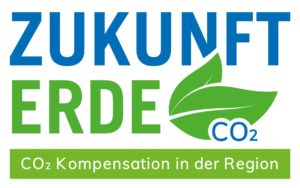The great hope for CO2 storage lies in our agricultural and forestry soils. Organic carbon is bound in the soil in the form of humus and this has a positive effect on the CO2 content in the air. Hence, the formation of humus serves both agriculture and the climate. Together with the Lagerhaus organisation we would like to use this opportunity to work with Austrian farmers and have therefore started the humus formation program “Zukunft Erde”.

Humus formation should be rewarded.
“Zukunft Erde” is a new program from the Lagerhäuser and RWA Raiffeisen Ware Austria, the aim of which is to promote the formation of humus in agricultural soils. The program works on two fronts: farmers benefit from richer soil when forming humus, and the additional humus formed within the framework of the program can be converted into regional, free CO2 certificates. As these certificates can be purchased by companies that wish to become climate neutral, this is an additional incentive for farmers to form humus and, hence, an important contribution to climate protection.
Numerous international initiatives, such as the recently presented “Farm-to-Fork Strategy” or the “4 Per Mille Initiative”, focus on organic carbon sequestration in soils. Together with the Lagerhäuser, farmers in Austria can use the opportunity to illustrate the positive measures for sustainable humus formation. Sustainable, humus-promoting cultivation has numerous advantages and naturally also has a positive effect on soil properties, such as the enhancement of biological activity in the soil by improving water retention and erosion control.
What is humus?
Humus is the name given to the fertile soil that is found in the uppermost layer of the ground. It consists of many different organic plant-based compounds (root and crop residues, root excretion) and microorganisms (microorganism excretion and dead microorganisms), which are stabilised in the soil. Humus contributes to water storage and supplying nutrients to plants and also binds in CO2. Humus is defined as organic carbon in the soil, but it is only stabilised against further decomposition if combined with the mineral soil in the form of clay-humus compounds or soil aggregates.
What happens during humus formation?
Carbon makes up 58% of the humus in the soil. If the humus content in the soil can be increased over the long term, more carbon will be stored, rather than entering the atmosphere as CO2. Hence, humus formation means that part of the carbon that was bound in the plant is not released again, but stored stably in the soil, especially on clay and silt surfaces and in iron oxides and soil aggregates.
Build and profit with “Zukunft Erde” humus
The “Zukunft Erde” program offers Austrian farmers the opportunity to benefit twice. Firstly, through increased soil activity and improved soil fertility, and secondly, in the form of financial compensation for the carbon bound in the soil. After registration (via Onfarming or in the Lagerhaus), the Lagerhaus soil sampling team takes a soil sample from a maximum of 5 ha and analyses the humus content and, if desired, other parameters. After a minimum of three years, a second sample can be taken and the humus content determined again. If humus formation has taken place – and CO2 has thus been bound in – the participant will receive financial compensation, the amount of which depends on the marketing price for CO2 certificates at that moment. One third of the payment is retained and will only be paid out after a third sampling (after a minimum of three more years) as long as the humus content has been maintained or increased further. If the humus content has fallen, this remaining payment is not made.
By increasing humus growth, agriculture thus makes a significant contribution to climate and environmental protection.
If you are interested, you are welcome to contact us at: office@agroinnolab.com
